How to Get From Worldbuilding (or Research) to Story
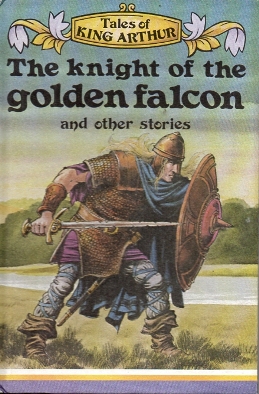
Worldbuilding is a thing.
People build Fantasy worlds for fun.
They’ve pretty much always done it, either collectively — like the storytellers who built Greek mythology and or theologians who created the medieval vision of Hell — or individually, like the quirky medieval mapmakers and of course Tolkien, and every modern GM who spends more time creating their world than playing in it, and every wannabe Fantasy author who loses themselves in the act of creation.
For a fictional world to live, however, somebody has to tramp its surface.
We need a Homer to dump Odysseus on the Island of the Cyclops, Dante to have Virgil lead him through the Circles of Hell, and “John Mandeville” — whoever he really was — to take us to the Land of Prester John. Meanwhile, Tolkien must stop building and start writing, the GM has to assemble their players, and the modern wannabe Fantasy author has to…
Ah. That’s the thing.
Once upon a time, you could just take your hero from A to B to C, picking up plot tokens or even just getting closer to the goal while having quirky adventures on the way. We now expect a little more from our authors.
How do you get from the cool world you just built — or researched — to an actual story?
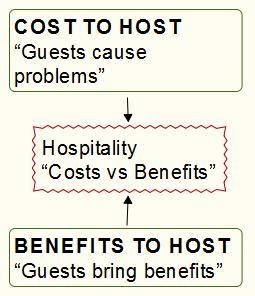
You can pick a protagonist and start “pantsing” your story.
However, this can go badly in two ways.
Either you lose momentum spend a lot of time looking around to work out what features affect your protagonist — and find missing ones — or else you end up with a generic story with the world as mere backdrop — wicked stepfather anybody?
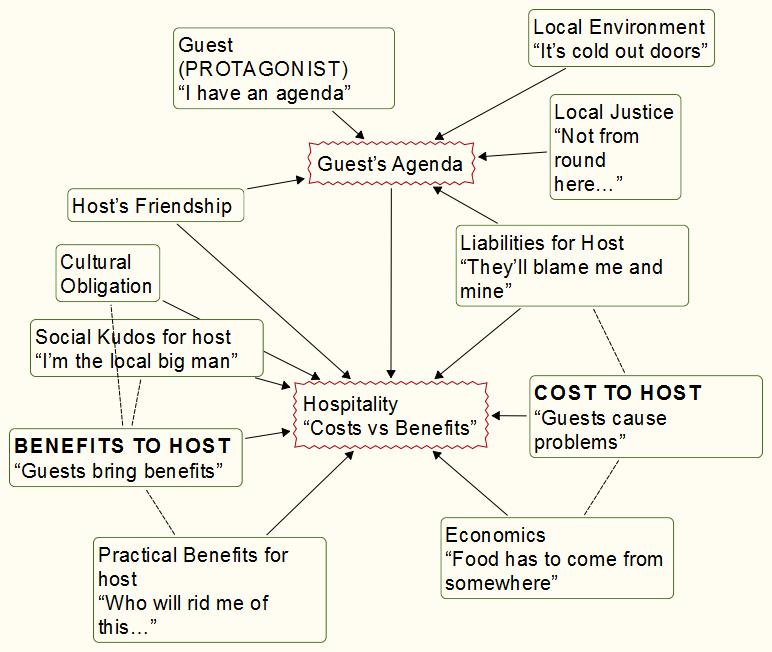
My approach saves time on the exploring and grounds my stories in the story world.
All I do is look for the conflicts — tensions — in my world.
That sounds awfully litswitsy, but actually it’s an imaginative process done with a simple diagramming tool.
(In my case I use Scapple, which integrates happily with Scrivener and has the advantage of being so hacked down that you can’t lose yourself in fiddling with the look.)
I call this a Conflict Diagram and it’s built on just two concepts:
“Player” (normal box) — Any person, group, thing, force that affects the world and people in it. Players usually have obvious tags (or Aspects if you like FATE).
“Bone of Contention” (jagged box) — Whatever Players struggle over, typically for possession or control.
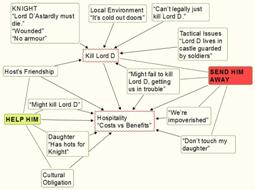
I use arrows to connect them, so for example — going back to that article I wrote on hospitality in the Early Middle Ages — if you want to stay in the provinces, you need to be somebody’s guest. This is complicated! So my first step is to show Hospitality as the Bone of Contention between Costs and Benefits to the host (see Fig A, above left).
On its own, that diagram is a little banal; the kind of Power Point slide you see at work and you have to pretend to consider deeply while a senior manager explains the exciting new concept in making you work harder for less.
However, this is just a jumping off point for exploring your story world. A few minutes tinkering gave me a far, far richer picture (see Fig B, above right). I’ve used dotted lines to indicate connected players.
(EDIT: The point of this process is to explore your story world. The resulting diagram only has to make sense to you, and you will rarely look back at it because in creating it, you have assimilated the information.)
It’s still generic. Like the devil, the story is in the details.
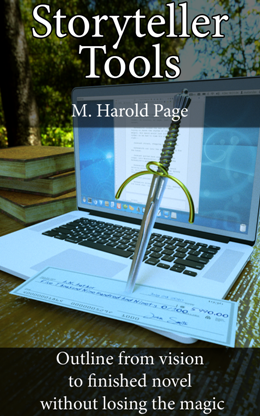
Hannu Rajaniemi: “…find myself to coming back to this book.”
Let’s imagine a knight on a revenge quest.
He’s out to kill Lord D’Astardly who, among other things, has wounded him and robbed him of his armour. He finds hospitality with an impoverished knight who has an attractive daughter. The snag is that Lord D’Astardly is the overlord, so if our heroic knight has a go at Lord D and fails, the host will be in trouble.
This gives us a much more complex picture (see Fig C, above left)! Once we have the conflicts, the story almost tells itself as the players play out their different agendas.
As I wrote this, I realised I was replicating a half-remembered King Arthur story, the Knight of the Golden Falcon. The impoverished host lends our hero some old armour so he can take part in a tournament in which he defeats the Lord D. However, creating the diagram shows us that things are far more complicated.
The host won’t want his daughter carried off or debauched by a down-on-his-luck knight errant. Nor will he be keen on being associated with a failed attempt to take out Lord D. Finally, entertaining is expensive, as is that old armour of his (which is also a badge of status he would rather not lose — but that’s for another diagram.)
Setting out a Conflict Diagram is itself a creative act; it’s a way to explore an story world, not document it. It’s fine if some of the details stay in your head. In fact, one you’ve drawn a diagram you may not even need to go back to it.
All that matters is that you’ve equipped yourself to tell a story or GM an adventure grounded in the culture and society of your world.
As for the writing… well you might want to take a look at my book Storyteller Tools: Outline from vision to finished novel without losing the magic.
M Harold Page is the sword-wielding author of books like Swords vs Tanks (Charles Stross: “Holy ****!”). He has sworn to put the Heavy Metal back into any genre foolish enough to cross his path.
But how do I make plot?
I find having a world very easy, but how to make a story that is worth telling?
Too many people make worldbuilding all about geography and history, but that’s really secondary or even completely irrelevant. Great worldbuilding is about factions and their ongoing conflicts. Just look at Star Wars. Huge universe that doesn’t really have any maps and the movies themselves don’t have any true history either.
If you have the conflicts, then the plot more or less writes itself!
I agree that people put too much into worldbuilding upfront, though of course sometimes you are stuck with a pre-built world, e.g. historical or franchise.
Can’t you conceive of the conflict by writing out a few sentences (like you did in the blog entry)? Do you really feel the diagram does anything different?
I’m curious how much this pre-writing takes place in genre fiction? Is it more likely with longer-form writing like novels than short stories? In both the lit world of Raymond Carver and the genre fantasy world of Mark Lawrence, they both have said they just sat down and wrote their stories.
With a one-shot short story any extensive worldbuilding would probably be a complete waste. But for a series the same requirements as for big novels aply. Because losely connected stories alow you to jump around more, it might even be useful to think bigger than for a novel with a clearly defined location for all the action.
Robert Howard did pretty extensive worldbuilding for his Hyborian Age and many people agree that it shows very clearly and made a big difference for the Conan stories.
Hi Martin,
I agree that worldbuilding can be very important in short stories too. What I’m wondering is how much do writers develop the world in advance vs. develop as they write. For example, in response to a goodreads question, Mark Lawrence said, “99.9% of my ideas bubble out of the ether and I have no notion of their origins. The Broken Empire appeared as I typed, without forethought.”
It probably depends largely on the writer and concept for the stories. If you have really good plot ideas that take place in a somewhat generic setting, you can dive right in and add things as you go.
If you want to write stories that explore cultures and have a feel of mythology to them, some pretty extensive worldbuilding is probably required. For a single story you can probably easily fake it, but in a longer series the difference will show very clearly. Karl Wagner’s Kane has a lot of similarities to Robert Howard’s Conan, but the worldbuilding is completely different. Kane is just somewhere at some time in an undefined world. Once you’ve read three or four Conan stories, most of the places and peoples that get mentioned really mean something to you and you know that it has implications for the current story. That’s something you can not fake when you make things up as you go.
Hi guys – back from (historical) fencing. Possibly a little beer-enhanced:
> Can’t you conceive of the conflict by writing out a few sentences (like you did in the blog entry)? Do you really feel the diagram does anything different?
Two things here.
First, most people find it hard to assimilate a complex web from text, whereas visual aids seem to go straight to the brain, hence the popularity of Mind Maps(tm). So yes you can use text instead, but I suspect most people can’t, or can’t do it as easily.
Second, this is more efficient. It’s easier to tinker and see possible connections, and avoids lots of typing.
> I’m curious how much this pre-writing takes place in genre fiction?
It depends. I have a mate who swears he’s a pantser, but actually outlines orally over coffee then holds the resulting story in his head until he types it out.
Other people clearly plan.
And in between are people who semi plan.
My own approach is to tell the story, but in layers.
Regarding worldbuilding in particular, you can do this from the inside but it means a lot of interruptions to your flow.
Hmmm. Wonder where I can find a historical fencing group.
Martin, I’m a huge fan of Mark Lawrence’s Broken Empire series. The worldbuilding and especially the character development was very compelling to me. I haven’t read the second series that’s in the same world (Red Queen’s War Series), but I really look forward to it. So, at least in this case the make-as-you-go worldbuilding can work.
M. Harold Page, I’m a cognitive psychology professor so I’m a bit skeptical of brain-based explanations of cognitive phenomena because they sound good but can often be flimsy. I’m not against diagrams–I use them all the time when I teach (besides, graphs, tables, figures, and images, if I’m going to use some sort of verbal information in a lecture slide I’ll make it some sort of diagram/flowchart that reflects relationships between concepts. But students look at that while I explain the concepts and their relationships, so they get the expository from me). The problem for me is that your Fig. B and C are too complex. I felt like the blog entry was much clearer. But I understand that different strokes for different folks.
Google “HEMA” and your area 🙂
> But students look at that while I explain the concepts and their relationships, so they get the expository from me
Ah-ha!
The point about these diagrams is that they are something “you” the writer build. They are a way of exploring/building your story world. They’re a creativity tool and so they don’t really have to mean much to anybody else.
I think this process of creation is the equivalent of your expository.
So, yes, Fig B and C are too complex to just hand to another person. It’s the process of creating them that matters.
(I will update the article to make this clear.)
> Mark Lawrence
For those interested, he’s written up his worldbuilding process here:
http://www.bookwormblues.net/2015/08/17/guest-post-mark-lawrence-on-fantasy-world-building/
And, yes, it’s pretty much create the tip as he goes along and allude to the rest of the non-existent iceberg.
>Brain based explanations
Yes, we laypeople are sloppy in our use of terminology. Mea culpa.
I did the Nanowrimo challenge and I have to say that your techniques that you showed in your book worked. Finishing a novel from start to finish was an amazing high. I think the hardest part was maintaining the work ethic to self discipline yourself to commit to the work. I found the hardest part was the second quarter because the beginning had the excitement steam behind it. Towards the end it seemed like I was chomping at the bit to get in the seat and finish it.
And now…..for the editing.
Anyway, I wanted to say thank you.
@WildApe
Music to my ears! If you haven’t already, please post a review on Amazon!
When I’m stuck, or when I know I’ve roughed out something that needs big improvements, I do a lot of journaling to discuss with myself what my options are. Listmaking’s another thing I do a lot of, sometimes as a first step for tackling a problem, sometimes as a way of organizing the thoughts from my journal. I love bulleted points. Not a big fan of school-style outlines.
As to diagramming, the only kind I really do is mapping out scene blocking or fight choreography with stick figures.
If (H.) Martin hadn’t said it first about how the conflicts generate plots almost effortlessly, I’d have said it. If your conflicts aren’t showing you what kinds of plots you can generate, you might need to go back to the books you’ve loved as a reader and see how those authors set up conflicts. You don’t need to do things the way those authors do, but reading in a focused, technical way like that may unlock your thinking about your own project.
I’m primarily a long-form writer, and I don’t think I could do what I do without returning to pre-writing many times over the course of the first draft.
Hi Sarah,
I think that your last sentence requires a blog entry to explain your process. While I found Martin’s diagrams a bit confusing, it’s certainly interesting to see what different writers do in their creative process.
So what do you guys think about writers who say they just sit down and write? Is that so unfathomable to you?
> So what do you guys think about writers who say they just sit down and write? Is that so unfathomable to you?
I DO just sit down and write, but I write outlines. 🙂
I think some people are just better at holding big complex webs in their heads than I am. However I also wonder how many of them are really writing the same story time and again…
NOLAbert, I should absolutely write a post about my process(es). The funny thing is, a few years ago, with pretty muchthe same repertoire of writing behaviors I have now, I would have said I just sat down to write. I didn’t realize how much pre-writing I was doing.
When I teach my students different pre-writing techniques, all of them feel contrived just by virtue of novelty. There are two purposes to all that how-to: to help students find and/or build a process that feels to them so natural as to become automaticized and invisible, and to give them a backup supply of things to try as they mature and their lives change, because sooner or later they’ll need to tinker with those processes that have come to feel so organic.
I seem to be unusually good at holding complex webs in my head. I actually wonder if I might not have one or two more slots of working memory more than most people. (Or maybe that’s an illusion fostered by 20+ years married to a brilliant person with ADD, who daily demonstrates how much can be done with fewer than average slots of working memory.) My pre-writing notes are more for generating and sorting options than for remembering plans I’ve already made.